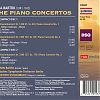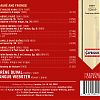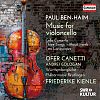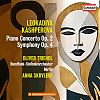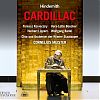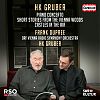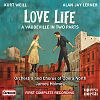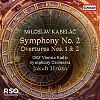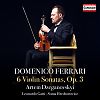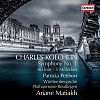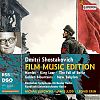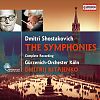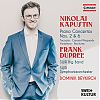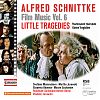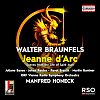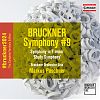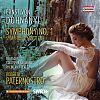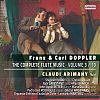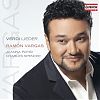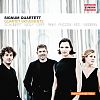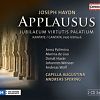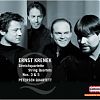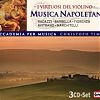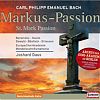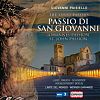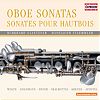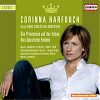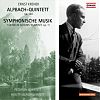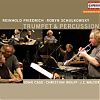cd
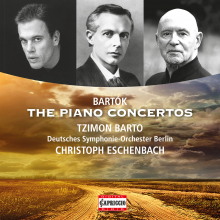
BÉLA BARTÓK - The Piano Concertos
Deutsches Symphonie-Orchester Berlin · Christoph Eschenbach
Béla Bartók is one of the unquestionably “great” composers and one of the few modern composers who established themselves in the repertoire. His three piano concertos are central to his biography and musical output, but only the Third, with some generosity, could be considered “popular”. Although well represented on disc, the first two are rare concert program guests. Tzimon Barto sees a problem in an all-too-mechanical approach to these two percussive works: “Even Bartók needs a supple touch. If you bang away at it, without rhythmical buoyancy, of course it will become tedious.” These recordings are his attempt, at doing justice to his Bartók-ideal.
Youtube
Weitere Bilder
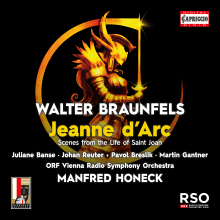
WALTER BRAUNFELS - JEANNE D'ARC
Juliane Banse · Johan Reuter · Pavol Breslik Norbert Ernst Salzburger Bachchor ORF Vienna Radio Symphony Orchestra MANFRED HONECK
Hörprobe
Youtube
Weitere Bilder
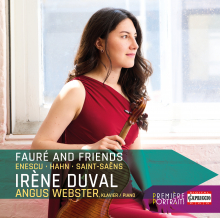
Premiere Portraits - IRÈNE DUVAL
IRÈNE DUVAL, violin ANGUS WEBSTER, piano
Praised for “her mastery of phrasing and of the dramatic dimension” (Diapason), “astonishing virtuosity” (Revelation Classiques) and “her infinite delicacy” (Le Populaire du centre), French violinist Irène Duval is establishing herself as a uniquely compelling performer with a strong interest in combining works central to the repertoire with little-known gems. Born in France to a French father and Korean mother, Irène Duval grew up in Japan, Indonesia, and Hong Kong before returning to France at the age of eleven. She studied with Suzanne Gessner and Jean-Jacques Kantorow, before entering the Conservatoire National Supérieur de Musique de Paris in 2008 in the class of Roland Daugareil; in 2014 she joined the Kronberg Academy in Germany, where she studied with Mihaela Martin for three years.
Weitere Bilder

#bruckner24 Symphony #9
Bruckner Orchester Linz · Markus Poschner
This final release of Capriccios Bruckner Symphonies - The Complete Versions Edition includes his very first and last Symphony. In March 1861, Anton Bruckner completed his counterpoint studies with the renowned teacher Simon Sechter who had also taught Schubert. His graduation signaled the end of an extended compositional hiatus. Bruckner’s F-Minor Symphony was conceived in the classical and early romantic tradition of Beethoven, Schubert, Mendelssohn and Schumann.
Bruckner’s Ninth: his best (as some say) symphony, certainly his most daring and, thanks to the missing finale, his most mysterious. It is where Bruckner meets Mahler and, while working on it, his maker. He wanted to write a finale, of course, but too much remains missing. What is left, is a heavenly Adagio, which quietly fades away with references in the brass to the two preceding symphonies. Thus ends Bruckner’s uncompleted life’s work.
Youtube
Weitere Bilder

Beethoven - The Mahler Re-Orchestrations
Deutsche Staatsphilharmonie Rheinland-Pfalz Michael Francis
Whenever Gustav Mahler spoke of Beethoven, he did so with an air of reverence: "Among poets and composers of more recent times we can, perhaps, name but three: Shakespeare, Beethoven, and Wagner.” And yet, Mahler the conductor considered Beethoven’s scores primarily a challenge; material that needed adapting and adopting to the orchestras and concert halls of his time. Richard Wagner had already prepared Beethoven’s scores and written about it in great detail. The balance of sound of the classical orchestra was off, and a return to previous states was out of the question, given the increased size of the concert halls. People knew of their existence, but it was not until 1927 that Erwin Stein, the composer, pianist, and music journalist active in Schoenberg’s circles, was able to report that all of Mahler’s conductor’s scores, replete with his “Retuschen” (retouchings), had in fact survived.


